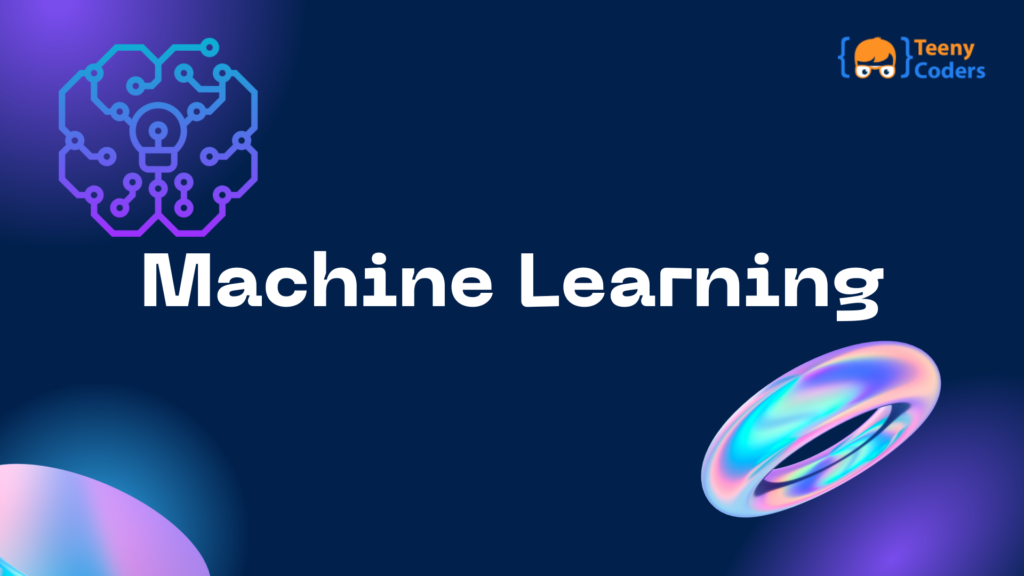Introduction
Machine learning is a market abruption field that has gained significant attention over the past few years. It can revolutionize various industries by enabling computers to learn from data and make intelligent decisions. We will explore some basic concepts of machine learning, its types, popular algorithms, and its applications across different domains.
What is Machine Learning?
A branch of artificial intelligence (AI) that focuses on developing algorithms and models that allow computers to learn and make predictions or decisions without being explicitly programmed. It involves the use of statistical techniques to enable machines to learn from and analyze large datasets, extract meaningful patterns, and make accurate predictions or decisions.
Types of Machine Learning
Machine learning can be classified into three types based on its learning patterns. Namely supervised learning, unsupervised learning, and reinforcement learning.
Supervised Learning
Supervised learning is a type of machine learning where the algorithm is trained using labelled data. The algorithm learns from the input-output pairs to make predictions or classify new, unseen data accurately. It involves mapping input features to the corresponding target variable.
Unsupervised Learning
Unsupervised learning, on the other hand, deals with unlabelled data. The algorithm learns patterns and structures within the data without any predefined target variable. It aims to discover hidden patterns, group similar data points, or reduce the dimensionality of the dataset.
Reinforcement Learning
Reinforcement learning is a type of machine learning where an agent learns to interact with an environment to maximize its rewards. The agent learns through trial and error by receiving feedback in the form of rewards or penalties based on its actions.
Machine Learning Algorithms
There are several popular machine learning algorithms used to solve different types of problems. Let’s explore some of them:
Decision Trees
Decision trees are hierarchical models that use a series of if-else conditions to make decisions. They are widely used for classification and regression tasks and offer interpretability.
Random Forests
Random forests are an ensemble learning technique that combines multiple decision trees to make predictions. They improve the accuracy and robustness of predictions by reducing overfitting.
Support Vector Machines
Support Vector Machines (SVM) are powerful algorithms used for both classification and regression tasks. They map the input data to a higher-dimensional space to find the best decision boundary that separates different classes.
Neural Networks
It is a class of algorithms inspired by the structure and function of the human brain. They consist of interconnected nodes or “neurons” organized in layers and are capable of learning complex patterns and relationships.

Applications of Machine Learning
Machine learning finds applications across various domains, enabling significant advancements and improvements in various areas. Let’s explore a few examples:
Natural Language Processing
Machine learning has revolutionized natural language processing (NLP), allowing computers to understand and generate human language. It powers applications like chatbots, language translation, sentiment analysis, and text summarization.
Image Recognition
Machine learning algorithms have made remarkable progress in image recognition and computer vision tasks. They can accurately identify and classify objects, recognize faces, and even generate captions for images. This has found applications in self-driving cars, surveillance systems, and medical imaging.
Recommendation systems
Machine learning is also extensively used in recommendation systems, where algorithms analyze user preferences and behavior to provide personalized suggestions for products, movies, music, and more. These systems have become integral to e-commerce platforms and streaming services, enhancing user experience, and driving sales.
Health Care
In the field of healthcare, machine learning has shown great potential. It aids in diagnosis and disease prediction by analyzing medical data such as patient records, lab results, and medical images. Machine learning algorithms can detect patterns that humans may overlook, leading to earlier detection and more accurate treatment.
Fraud Detection
Financial institutions benefit from machine learning through fraud detection and risk assessment. Algorithms can identify suspicious transactions, flag potentially fraudulent activities, and assess creditworthiness based on historical data. This helps prevent financial losses and ensures secure transactions.
Automated Vehicles
Another exciting application of machine learning is in autonomous vehicles. Through advanced algorithms and sensors, self-driving cars can perceive their environment, detect objects, and make decisions in real time, enhancing safety on the roads and reshaping transportation as we know it.
Manufacturing Industry
In the manufacturing industry, machine learning is used for predictive maintenance. By analyzing data from sensors and machines, algorithms can detect patterns indicating potential equipment failures. This enables proactive maintenance, reducing downtime and optimizing production efficiency.
Environmental Monitoring
Machine learning is also making an impact on environmental monitoring and climate prediction. By analyzing vast amounts of data from weather stations, satellites, and sensors, machine learning models can generate accurate climate models, predict natural disasters, and aid in environmental conservation efforts.
Machine learning is a powerful field that enables computers to learn from data and make intelligent decisions. With its various types, algorithms, and applications, it has the potential to transform industries and drive innovation. As technology continues to advance, machine learning will play an increasingly significant role in shaping our future.
FAQs (Frequently Asked Questions)
1. What are the prerequisites for learning machine learning?
2. Is machine learning the same as artificial intelligence?
3. Can machine learning algorithms be biased?
4. What are some ethical considerations in machine learning?
5. How can I get started with machine learning?
Conclusion
In conclusion, machine learning is a fascinating field that continues to advance and impact various industries. Its ability to learn from data and make intelligent decisions has paved the way for innovative applications in healthcare, finance, transportation, and more. As technology progresses, machine learning will play a crucial role in shaping the future. So, embrace the possibilities of machine learning and explore its vast potential for solving complex problems and driving progress.


